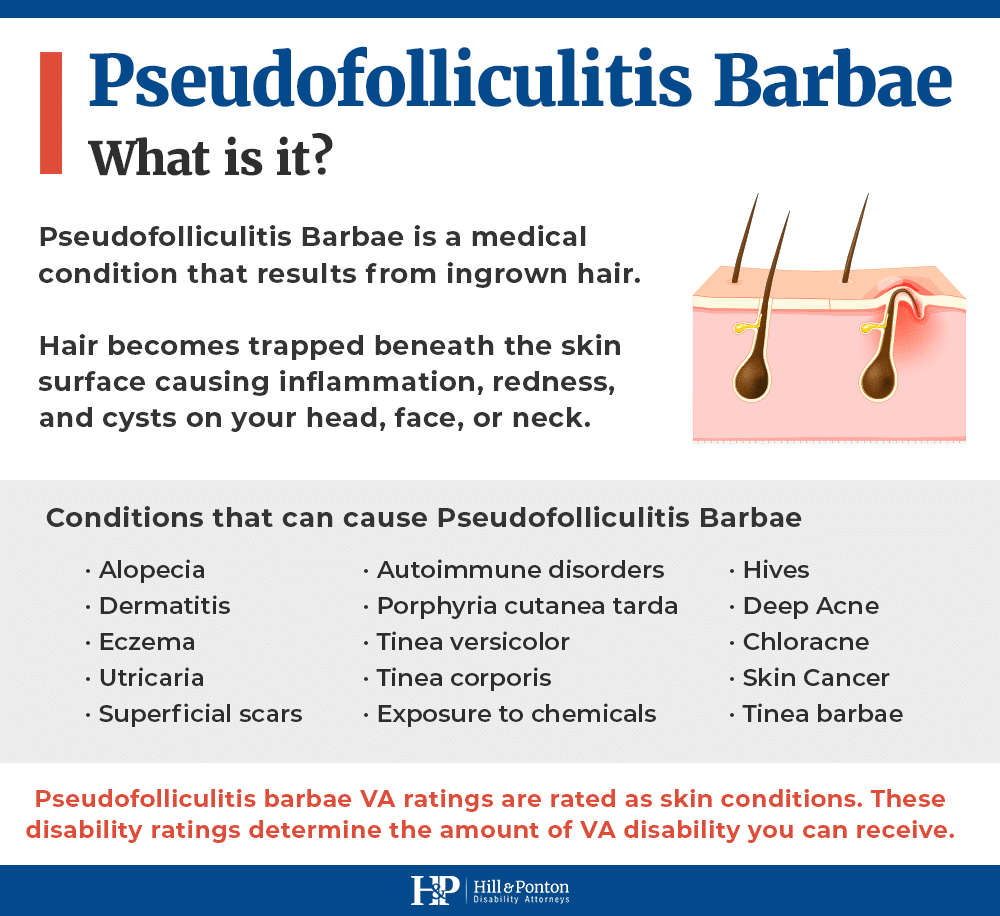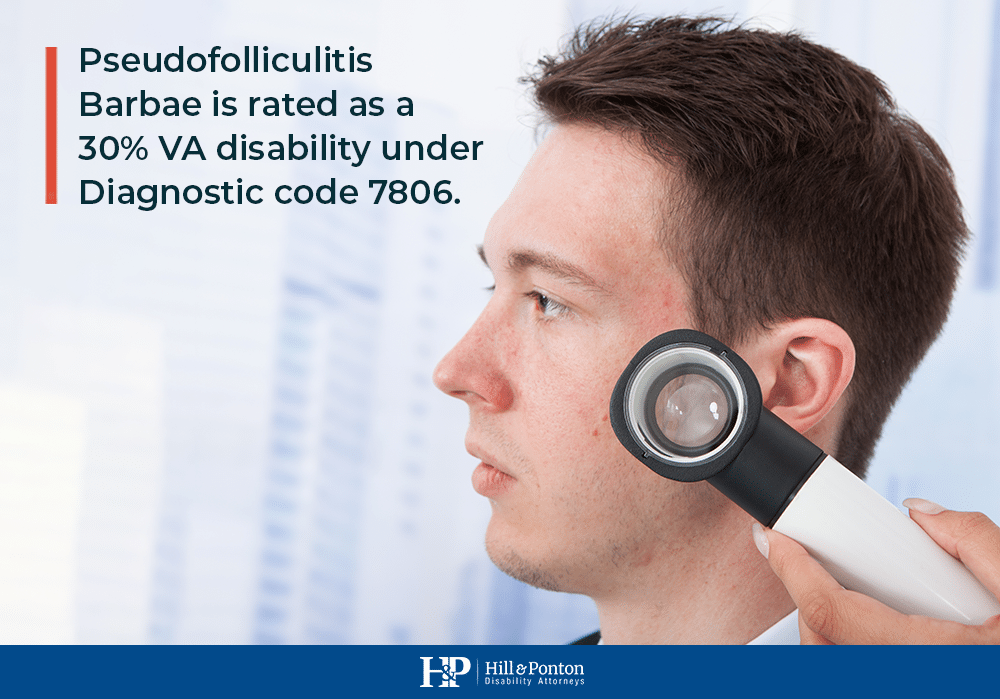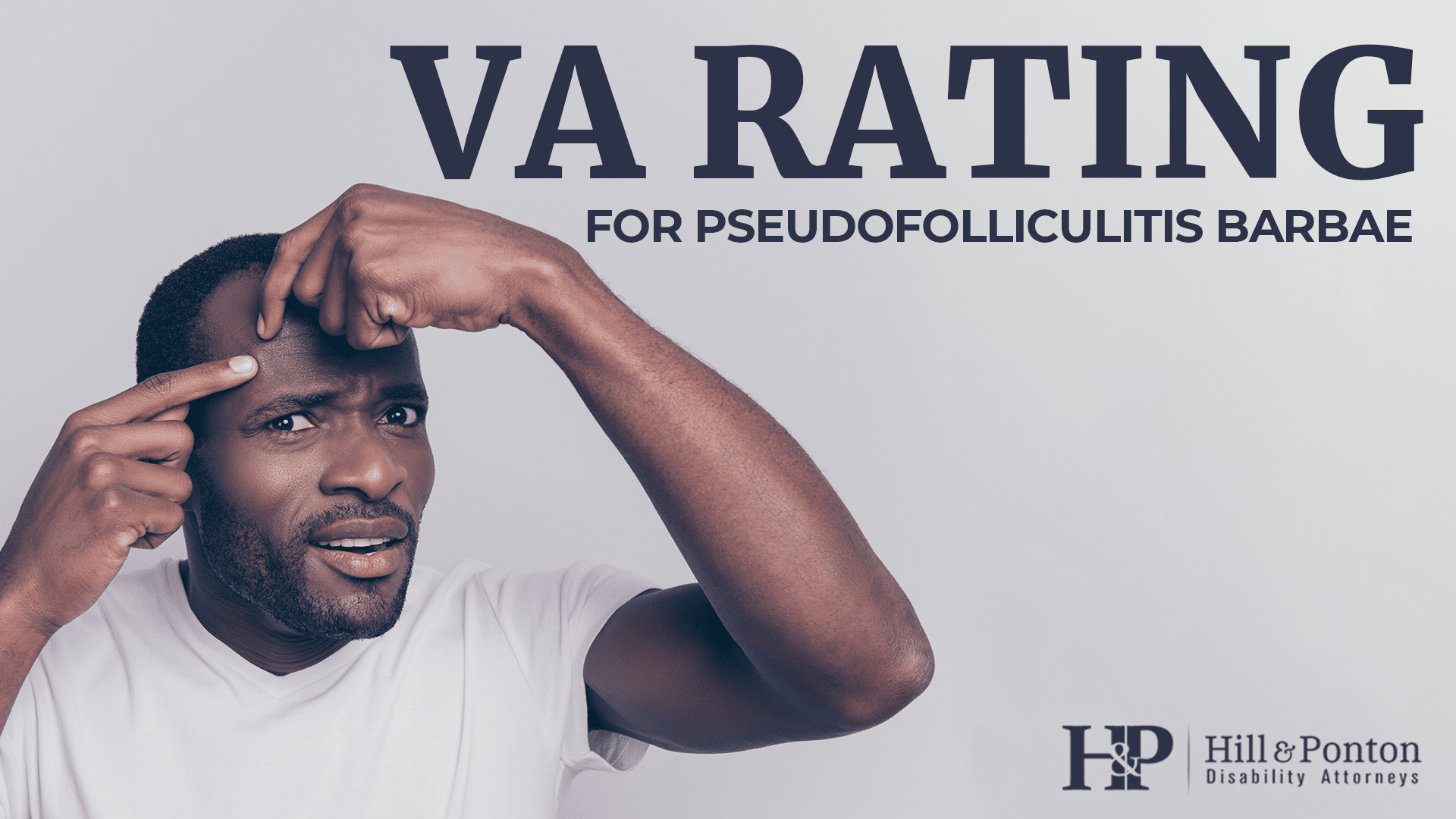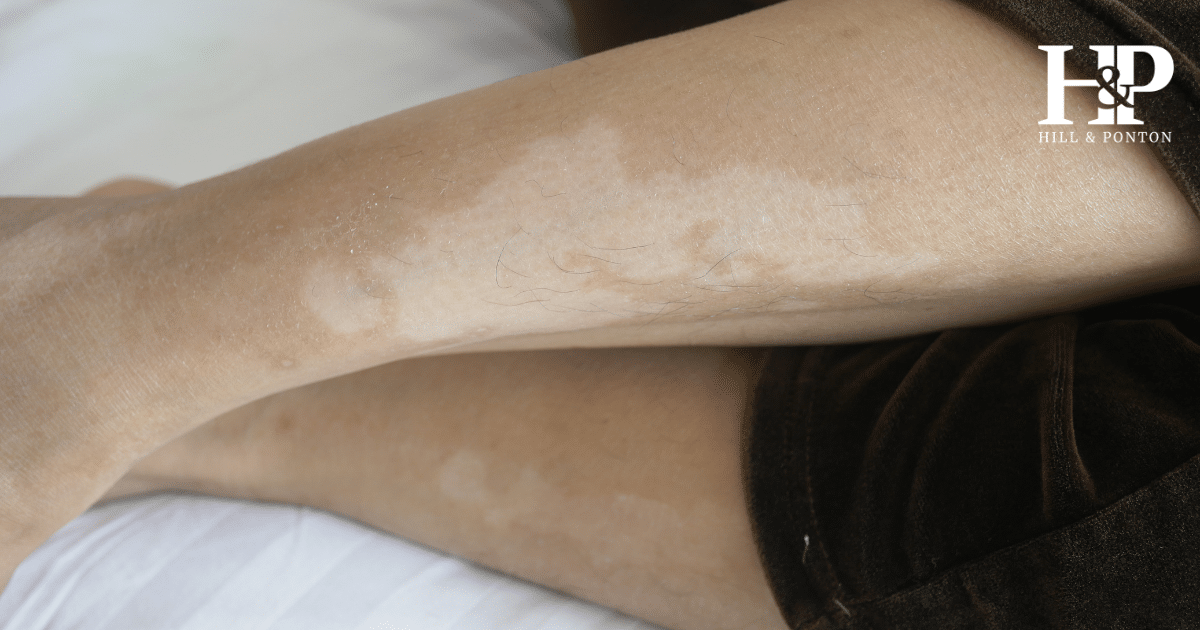If you are a veteran who suffers from pseudofolliculitis barbae, also known as razor bumps, then you may be wondering how the condition is rated for VA disability compensation and what diagnostic code the VA assigns.
In this blog post, we will cover all aspects of pseudofolliculitis barbae and how it can lead to a rating for VA disability benefits.
We will start with a definition of pseudofolliculitis barbae, and then move on to discussing how to establish military service connection and potentially secondary service connection.
We will also look at aggravation as a way to establish service connection, and examine C&P exams. We’ll also briefly talk about TDIU disability ratings.
What is pseudofolliculitis barbae?
It is a medical condition that results from ingrown hairs. The hair becomes trapped beneath the skin surface and can cause inflammation, redness, and pus-filled cysts around your beard area or on your head, face, or neck.
Pseudofolliculitis barbae can often look like the aggravation of the underlying soft tissue of the face and neck, and can result in multiple scars on the head face,and neck. Pseudofolliculitis barbae can also result from other, underlying skin conditions.
Pseudofolliculitis barbae is a common condition, affecting up to 45% of black men, a lower percentage of Hispanic men, and about 3% of Caucasians.
Men are more likely to develop pseudofolliculitis barbae because they have coarser hair that curls back into the skin. The condition can occur anywhere on the body, but is most common on the face, neck, and scalp.

How to establish VA disability service connection for Pseudofolliculitis Barbae
There are several ways that pseudofolliculitis barbae can be a service-connected disability. The first way is via direct evidence of an in-service event. This could include medical evidence showing that you developed pseudofolliculitis barbae while you were in the military.
It could also include statements from fellow service members or commanding officers that you were exhibiting symptoms of pseudofolliculitis barbae at the time of active duty.
Secondary service connection for Pseudofolliculitis Barbae
It can be established if there is evidence that your current condition is a result of an in-service event. This could be medical records showing that you developed pseudofolliculitis barbae after you left the military or evidence that your current condition is aggravated by an in-service event.
Multiple skin conditions can also result from active duty and be primarily service connected. This could in turn be used to connect pseudofolliculitis barbae if it was caused secondarily by one of the following conditions (not an exhaustive list):
- Alopecia
- Dermatitis
- Eczema
- Utricaria
- Superficial scars
- Hives
- Deep Acne
- Chloracne
- Autoimmune disorders
- Porphyria cutanea tarda
- Tinea versicolor
- Tinea corporis
- Tinea barbae
- Skin cancer
- Exposure to toxic chemicals (this is unfortunately common for Gulf War veterans)

Pseudofolliculitis barbae VA ratings
Razor bumps are rated under the criteria for skin conditions. The schedule for rating disabilities criteria determine the amount of VA disability you can receive.
For many veterans, psuedofolliculitis barbae is not their primary disability. It’s likely a secondary condition. Some veterans may have obtained superficial scars during active duty that contribute to the aggravation of their pseudofolliculitis barbae.
There are certain criteria required to obtain a VA rating for scars.
Veterans affairs rates qualifying scars based on the following general rating formula:
- 80% VA rating: veterans who display tissue loss or gross disfiguration of three or more characteristics or features, or the presence of an unstable scar. (Razor bumps do not qualify for this rating)
- 50% VA rating: tissue loss or gross distortion or asymmetry of two characteristics, or the presence of an unstable scar. (Razor bumps do not qualify for this rating)
- 30% VA rating (the current max for pseudofolliculitis barbae): two or three characteristics of disfigurement or tissue loss and gross distortion, or the presence of an unstable scar of one characteristic like nose, chin, forehead, eyes, ears, cheeks, or lips.
- 10% VA rating: one characteristic of disfigurement.
Currently, razor bumps, on its own, is rated as a 30% VA disability under VA Diagnostic code 7806. The following diagnostic codes are used for scars in different body parts: 7800, 7801, 7802, or 7804. Let us know if you want to see more information on these.
All in all, If you are experiencing severe razor bumps that persist through near-constant systemic therapy or intermittent systemic therapy you might have severe pseudofolliculitis barbae and be entitled for VAA
Service connection via aggravation for pseudofolliculitis barbae
It can also be service-connected if it can be shown that your current skin condition is made worse by an in-service, military service event. You would need evidence that your symptoms have worsened or requires more treatment than it would otherwise if you were not in the military, entitling you to VA disability.
C&P Exams for pseudofolliculitis barbae
If you are seeking a VA disability rating for pseudofolliculitis barbae, you will likely need to undergo a C&P exam to claim VA disability. This is an examination performed by a doctor who is hired by the VA. During this exam, you will be asked questions about your existing condition, your military service, and how your skin condition affects your daily life.
The doctor may ask you about your history with skin conditions, your current disability rating, and other medical conditions. Don’t be surprised if the doctor asks if your other medical conditions have immunosuppressive drugs required or if you’re taking other immunosuppressive drugs. If your pseudofolliculitis barbae is still present after six weeks on immunosuppressive drugs, you may be entitled to a higher VA rating for pseudofolliculitis barbae.
The doctor may also examine the exposed areas affected and underlying soft tissue to get a better understanding of the severity of your skin condition. The examiner will then make a recommendation to the VA about your rating and VA disability benefits.
You should answer the doctor’s questions honestly and accurately so that the examiner can make an accurate assessment of the severity of your pseudofolliculitis barbae, and so the VA can assign the correct diagnostic code and issue you the highest rating possible. Again, the VA diagnostic code that is used to rate pseudofolliculitis barbae is 7806. If you are curious about the VA disability rating schedule, you can find it in the VA Schedule for Rating Disabilities manual.
Possibility of TDIU for pseudofolliculitis barbae
To qualify for TDIU, you must either have a primary disability that is rated at least 60% disabling or you must have a total combined disability rating of 70% with one condition being at least 40% disabling, and be able to show how you are unable to work or maintain gainful employment. As you can imagine, this is unlikely with pseudofolliculitis barbae but if you have other service-connected disabilities that are seriously affecting you along with razor bumps related to service, then it’s an option. must be the main reason for your inability to work.

It’s important to remember that if razor bumps related to your military service are severely impacting your life, you may be entitled to VA disability for it. It’s your earned right. Submitting an application for VA disability can seem daunting but you start with VA Form 21-526EZ. This can take some time, but if pseudofolliculitis barbae is affecting your daily life severely, it could be worth the wait for VA benefits.




